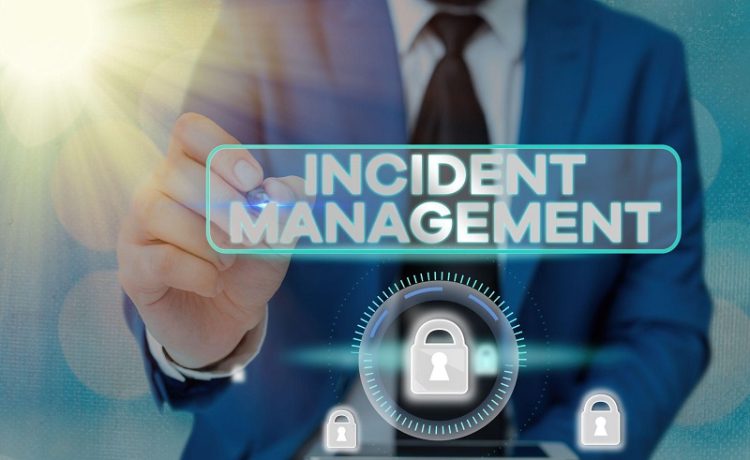As the risk of cyber threats and security incidents continues to grow, even the most sophisticated security measures can’t guarantee protection against all potential threats. That’s why it’s essential for every organization to have a solid incident response plan in place. Such a plan outlines the steps to be taken during a security incident, enabling organizations to respond quickly and effectively to minimize the damage.
This article will guide you through the process of creating an incident response plan for your organization.
What is an Incident Response Plan?
An Incident Response Plan comprises a set of instructions for identifying, containing, and mitigating the consequences of a security breach or other information security event. It may also be referred to as an emergency or incident management plan.
It serves as a roadmap for responding to various possible scenarios, such as data breaches, insider threats, malware outbreaks, and DoS or DDoS attacks. By following the guidelines outlined in the incident response plan, organizations can take swift and effective action to minimize the impact of such incidents on their systems and operations.
Why is it important?
Having a plan for incident response is essential for organizations to minimize the negative effects of security incidents. Even small issues like malware infections can escalate quickly and cause significant disruptions, data loss, and reputation damage. Effective incident response processes can minimize losses, identify the cause of incidents, establish communication plans, and prevent future occurrences.
IBM reported that the average cost of a data breach in 2022 was $4.35 million, making business continuity and brand protection crucial, especially for third-party vendors. While avoiding all cybersecurity risks is impossible, having a robust incident response plan can mitigate the most significant threats.
Planning for incident response is crucial for any organization, as it enables them to minimize the duration and impact of security incidents, identify relevant stakeholders, streamline digital forensics, improve recovery time, reduce negative publicity, and prevent customer churn.
Creating an Incident Response Plan
Before drafting guidelines for your organization’s cyber incident response plan, it’s crucial to go through the preparation phase.

Although the specifics may vary depending on your organization’s needs, some general recommendations apply to most businesses, which are given below.
In the event of a cybersecurity incident, it’s crucial to have dedicated personnel from each department to mitigate the impact. First, assign individuals within your IT Security department to detect and contain the attack. If you lack an internal cybersecurity team, identify the point of contact for your outsourced security agency.
Next, assign HR professionals to handle internal communications and address employee concerns, customer service personnel to inform and assist clients, and legal and PR experts to manage external communications and related processes. By designating individuals to each role, you can efficiently manage the incident and reduce its impact on your organization.
It’s important to understand that despite protective cybersecurity measures, there may still be vulnerabilities in your network that cybercriminals can exploit. If employees are the weak point, it’s crucial to document this and enhance training procedures. Employees should be trained to recognize and avoid social engineering attacks, as well as follow the company’s password policy.
Identifying the most important assets allows the response team to prioritize their efforts in the event of an attack. Understanding vulnerabilities and critical assets can lead to a more efficient response, enabling the team to contain and minimize the impact of the incident.
In the event that a cybersecurity incident exceeds the capacity of your IT security team, it may be necessary to enlist the help of an external expert for auditing and remediation purposes. Research and contract a trustworthy individual or team to assist with improving security measures and potential incident response aid.
Purchasing sufficient data backup space for critical documents and establishing automatic backups is important. Assign roles to both internal and external individuals to ensure everyone understands their responsibilities in the event of an incident. This preparation can help mitigate the impact of a cybersecurity incident and speed up the recovery process.
The SANS Institute published a 6-step framework for an incident response plan. The framework has remained a model that helped organizations create their incident response plan. The framework goes beyond the preparation phase. This includes.
- Identification: Identifying the nature and scope of the security breach.
- Containment: Isolating the affected systems and stopping the attacker’s progress.
- Eradication: Removing security threats and vulnerabilities from your devices and network.
- Recovery: Restoring your networks and systems to their state prior to the incident.
- Lessons Learned: Identifying errors made during the incident and determining what steps must be taken to prevent future attacks.
It’s important to note that each phase consists of a few elements that often overlap, but using these steps to create a comprehensive incident response plan is essential.
Effective communication is critical during a cyber-attack. Plan your crisis communication strategy by identifying who to notify, when to report the incident, and what laws apply.
It is also critical to carefully plan when to inform clients, partners, suppliers, and other affected parties about the cyber-attack. If the attack was serious enough to make headlines and attract public attention, it is critical to make a public statement, which must be done with extreme care to avoid further damage to your reputation.
Testing your incident response plan in a simulated environment can reveal any weaknesses or discrepancies that must be addressed. It is important to revisit and update the plan at least once or twice yearly to ensure it remains current and effective.
Keep up with the latest security recommendations and best practices to improve your plan. After an attack, perform a thorough analysis to identify areas of improvement for your plan.
Threat Identification and Evidence Collection made simple with CyberArrow
Regularly updating your incident response plan and conducting frequent training sessions for your response teams are necessary to defend against security breaches. Learn from each attack to improve your response to future incidents. Practice and preparation are crucial for effective cybersecurity.
Need assistance with responding to potential threats to keep your business running smoothly? CyberArrow can help you automate ISO 22301 process so you can concentrate more on developing a secure business.
The platform simplifies evidence collection by automatically generating reports and logs documenting the incident. Visit our website to learn more about the CyberArrow compliance automation tool, or schedule a free demo today.














